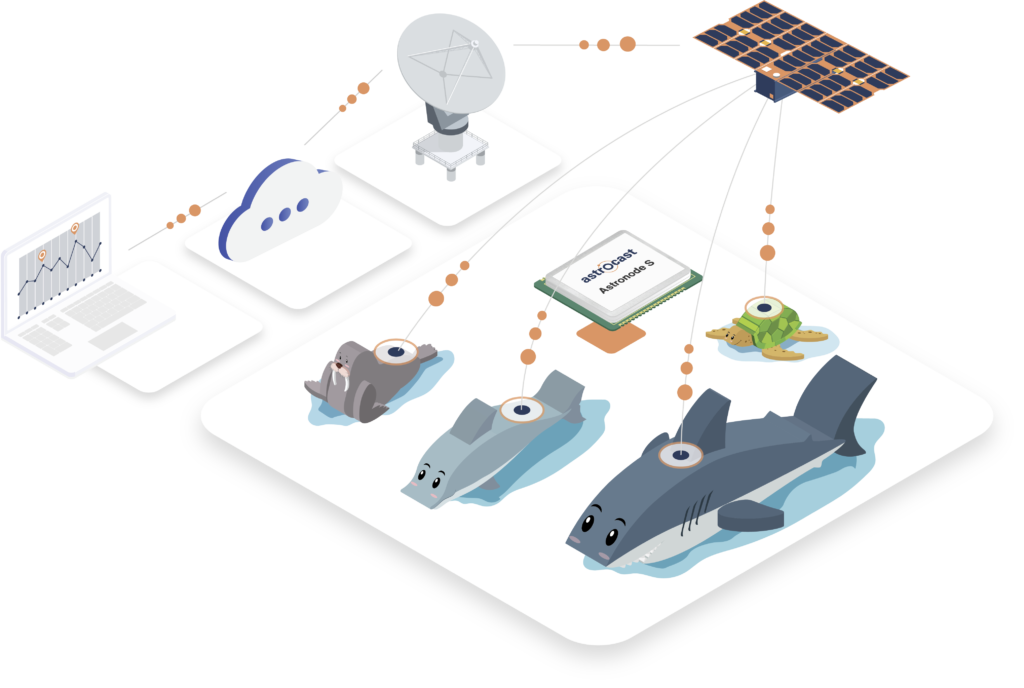Controlling remote assets with SatIoT – the importance of bidirectional communication
23 Feb 2023 | 3 min read
Until now, many organisations – including System Integrators (SIs) and their end users – have struggled to cr...
In a world of global innovation and cooperation, practical solutions to the challenges created by climate change and environmental devastation are being developed and proposed daily. But with the clock ticking, the world needs a way to fast-track the most promising opportunities – and not only for climate change. How can farmers meet ever-increasing demands to feed a growing population while also scaling back on pesticides and reducing the need to medicate cattle? Can plans to address the escalating volume of plastic in our oceans be successful and coordinated across the world?
Post COP26, global collaboration is increasing, such as the coordination of over 90 organisations within the Adaptation Research Alliance (ARA), which are collaborating to increase the resilience of vulnerable communities on the frontline of climate change. Organisations such as ARA are increasingly data driven, as Jesse De Maria Kinney, Head of Secretariat for Adaptation Research Alliance (ARA) said: “Climate adaptation requires evidence-based solutions that are tailored to local contexts.”
To achieve the vital evidence requires understanding – and that means tracking, monitoring and measurement across the world on an unprecedented scale. There is no doubt that IoT is set to play a key role both in understanding the impact of climate and environmental change, and in assessing the value of possible solutions.
The challenge today is that just 15% of the planet is currently covered by affordable, accessible IoT connection and the alternative, Satellite IoT (SatIoT), has been far too expensive for either widespread environmental research or speculative remediation experiments. 2022, however, has heralded a new generation of affordable SatIoT solutions that are transforming the business case and unleashing compelling new activity across the world.
From studying the rate of deglaciation at the polar ice caps to capturing information from weather stations, groundwater monitoring and seismology, a reliable, low-cost nanosatellite network transforms the timeliness of information captured from even the most remote regions across the globe.
Indeed, even at-risk animals are playing their role in combatting climate change. Using tiny sensors attached to an array of sea creatures, including turtles, is not just providing scientists with new insight into the behavior and travel patterns of the animals, but also captures vital information regarding sea health, including salinity. From mapping sea temperatures to the depth the turtles are swimming, to capturing information about the quality of the seawater, the information provided by these creatures is automatically transmitted via SatIoT as soon as they surface.

“Tracking turtles through affordable, ubiquitous global Satellite IoT is just the start of a revolution in climate change understanding that should herald a new era of provable, positive environmental change.”
explains Laurent Vieira de Mello, COO, Astrocast
The challenge, however, is not simply to improve our understanding of climate change and environmental concerns, but to rapidly identify the value of any initiatives being taken to reduce the impact of that change. In New Zealand there is a drive to remotely track cattle to identify individual animals that are unwell, allowing immediate intervention and removal from the herd to reduce the spread of disease – and, in the process, minimise the need for medication. The ability to rapidly capture and analyse this information will not only help to fast-track the adoption of this model but also, as a result, provide rapid insights into the success of the approach.
With bidirectional IoT, information can be transmitted back to the devices, allowing new levels of innovation and experimentation. This is particularly valuable for new agricultural initiatives designed to minimise the use of chemicals and water. With the ability to send commands back to assets, farmers can manage irrigation systems without any need for expensive and often hard-to-source human interaction. Utility companies can control water management systems in line with flood prevention strategies. Governments can respond rapidly to catastrophic climate events that prevent danger to life, especially in those most vulnerable communities.
With information seamlessly integrated with existing analytics, AI, or machine learning solutions, organisations have the power to not only use the data to improve understanding; but also quickly respond and use the new insight to inform timely commands to remote assets.
Evidence-based change is at the heart of global strategies for mitigating the impact of climate change on both current and future populations. By extending the reach of affordable IoT across the globe, SatIoT is unlocking the next generation of essential innovation that will be vital as governments, scientists, not-for-profit organisations and individuals adapt to a way of life that includes cleaner fuel and less reliance on pesticides, while still feeding an ever-increasing population.
Taking IoT Assets further with Astrocast
To take your IoT strategy further and unlock the power of your assets, find out more about Astrocast’s flexible SatIoT service and join our Astropreneur Programs.